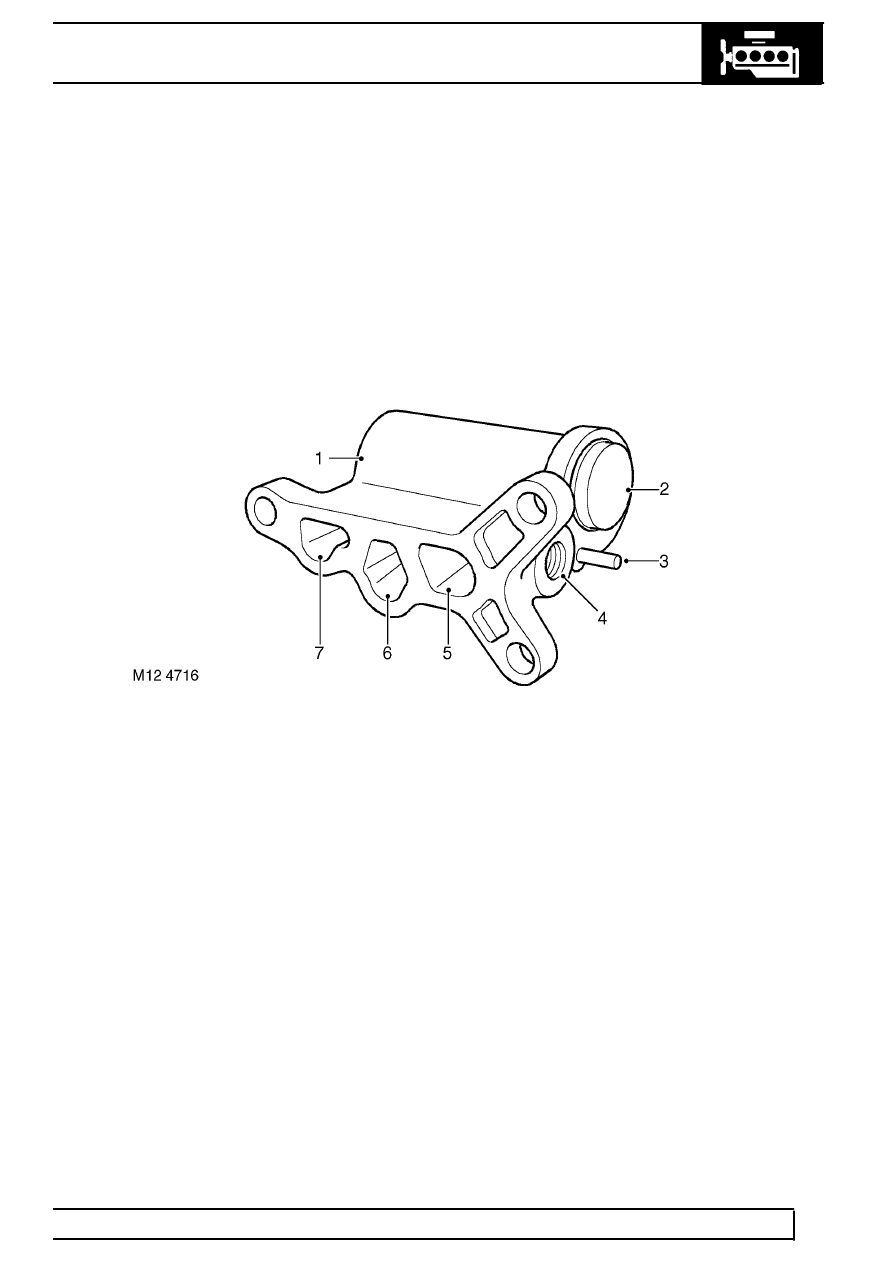Engine Cylinder Block Information for TD5 Defender Maintenance

ENGINE
19
DESCRIPTION AND OPERATION
Full flow filter
Approximately 10% of the total oil flow enters the centrifuge pot through a side port in the pot casting which is
mated to an outlet port at the lower side of the oil cooler housing. A rubber ’O’ ring sits in a recess around the oil
cooler port which seals the faces between the centrifuge pot and oil cooler port, and it must be replaced every
time the centrifuge assembly is removed. Oil leaves the centrifuge pot through a drain tube which is attached to
the base of the pot by means of two fixing screws. The lower end of the drain tube returns oil to the sump and is
fixed to the sump by means of two screws. Gaskets are included at the port interfaces between the oil drain tube
and the centrifuge pot and the oil drain tube and sump return port; these gaskets must be replaced every time the
oil drain tube is removed.
The centrifuge cover is fixed to the pot by two screws and is sealed by an ’O’ ring.
1. Full-flow filter housing
2. Thermostat
3. Roll-pin
4. Port - feed line to turbocharger
5. Outlet port from full-flow filter - higher than 74
°
C
6. Inlet port to full-flow filter
7. Outlet port from full-flow filter - lower than 74
°
C
The main filter is a conventional full flow cartridge type filter containing a paper element able to trap particles
greater than 15 micron (0.015 mm) in diameter.
The cartridge is screwed to an adaptor casting by way of a hollow brass threaded insert which connects the filter
outlet port to the adaptor casting. A sealing ring seals the union between the oil filter cartridge and the adaptor
casting.
